Many of us share goals of completing an automotive restoration project with a loved one, with the most common scenario being that of the father-son project. The car shown here is a 1969 BMW Bavaria, otherwise known as a 2800 for its 2.8L inline-six. This stately sedan was already a barn find when the seller discovered it with big plans to work on it with his dad. Unfortunately, his father passed away and the three-pedal sedan has been sitting ever since, waiting for its shot at rejuvenation. The BMW is listed here on eBay with bids to $2,850 and the reserve unmet.
The Bavaria is one of the more intriguing offerings in BMW’s classic lineup. It hasn’t ascended the ranks like the classic 2002 has, so prices have remained fairly stable. The Bavaria also may have missed the window of ever being truly collectible, so I wouldn’t kick yourself for missing out if you’ve been sitting on the sidelines. What I mean to say is that everything of a certain age has likely risen as far as it’s going to go; the rising tide is now focused on much newer cars, so I doubt we’ll see much more than $5,000 offered for this forgotten German sedan. The Cibie fog lights are a nice touch and perhaps suggest this was someone’s sleeper sedan back in the day.
And it certainly could be considered that given the concept of a powerful European sedan with three pedals was somewhat of an anomaly on U.S. roads at the time. We simply didn’t see cars like this and domestic manufacturers certainly didn’t build them that way. The Bavaria was a breath of fresh air for anyone who wanted a performance car but couldn’t justify having only two seats. The interior of the the seller’s stalled project car remains in great condition, with a very clean dashboard, original thick-rimmed steering wheel, and bucket seats and door panels in seemingly very nice condition.
The seller notes that he and his dad began digging into the car only to notice a leak where the oil filter sealed. His father fell ill shortly thereafter and the project didn’t get much more in the way of attention or repairs. The Bavaria has already been upgraded, ditching the original carburetors in favor of three Weber DCOE’s. This is a very cool swap, and sort of a must-do if you want to hot rod an old carbureted BMW. I did the same modification on my Euro-spec E21, and loved every minute of it. I hope this project comes back to life; there certainly aren’t many of these still hiding in barns.





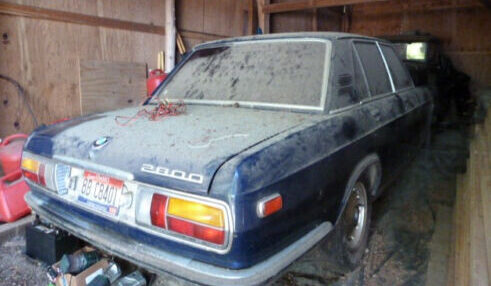
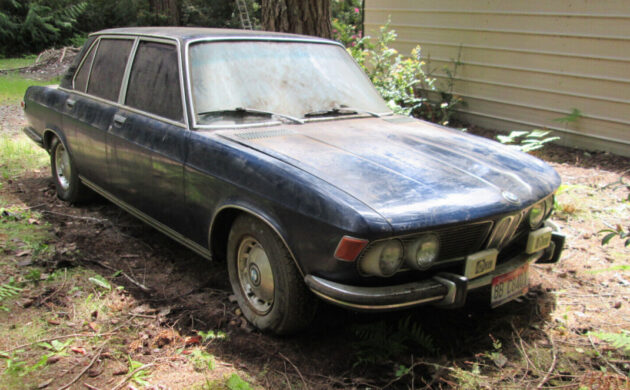

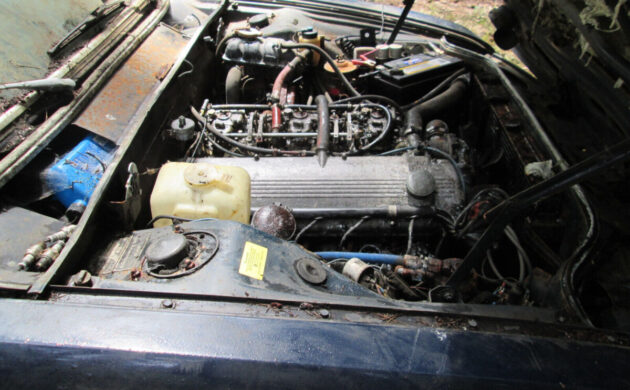

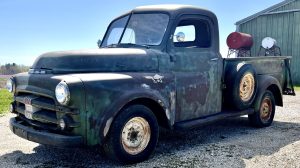
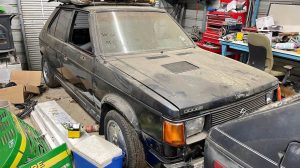
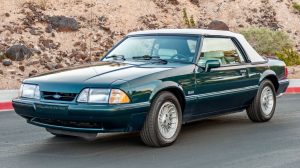


A lot of people ignore the Bavaria, which is a shame. They’re lovely sedans, roomy and comfortable. With the manual transmission, this should be a really nice cruiser as well.
I remember driving one, originally an automatic, on which the owner had performed a manual swap. That transmission was a five-speed, although I seem to recall that these had four-speeds from the factory.
I wouldn’t even want to think what it would cost to go through the car, though. At the $3K reserve, it might be worth doing if you can make use of the supplied shop manual and do a lot of the work yourself. The owner of the car I drove, which was a very low-mile, always-pampered example, said Bavaria parts, when he could find them, weren’t exactly inexpensive.
Nice, nice car, however. Deserves more interest than Bavarias generally seem to get.
Bavarias are really cool cars – So much better looking &-
driving than American cars of the period.The first one I ever
saw blew me away.
If this one doesn’t have any serious rust,it might be worth
getting this one.You could do worse – just look at the prices on
all those rust bucket cars that seem to be everywhere.
The Bavaria and 2800 were separate models, or perhaps more precisely separate spec levels of the same underlying “New Six” E3 model.
This one being a ’69 badged as a 2800 (presuming that’s the original badge) means it’s just that, and thus technically not a Bavaria — tho’ to be fair to the seller, there’s more recognition of the Bavaria name than the somewhat generic 2800 designation, so it makes sense they’d list it as a Bavaria.
The Bavaria in name and concept was cooked up in 1971 by BMW’s then-importer, Max Hoffman, applying the American muscle formula of putting the largest engine (from the fully-loaded 2800) in the lightest, lowest-spec trim level (the 2500) to appeal better to American preferences for power and bargain deals.
That gambit paid off in spades for Hoffman and BMW in the US, also kicking off BMW’s reputation for high-performance sedans, so they continued it for ’72 as engine sizes increased, putting the 3-liter engine from the full-luxe 3.0S into the new base-level 2800 (no longer offered in the US market).
Loved that era of BMWs. My uncle had a 2800 in Germany and it was a seriously fun car to drive – took three days for my dad to wipe the smile off his face after a fast drive through the Franconian countryside. This could be a very fun project for a good DIYer.
Ended:Aug 02, 2022 , 3:21PM
Winning bid:
US $6,900.00
[ 24 bids ]